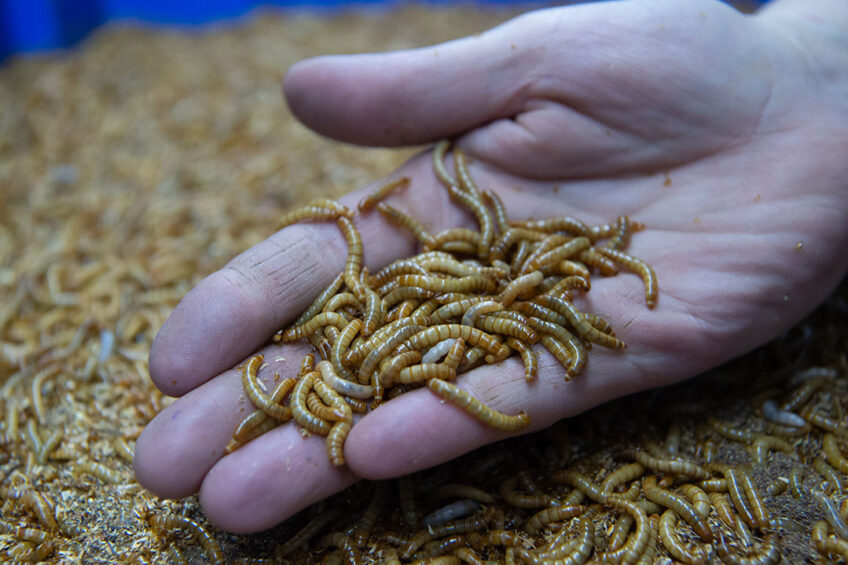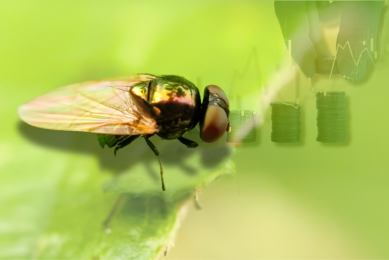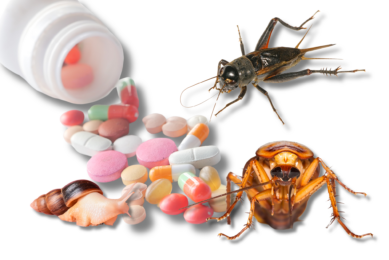Will insect production be able to meet aquafeed market demand?

Many in aquaculture are very excited about the potential for industry growth through using insect feed ingredients. The main question is whether the insect industry can meet the demand.
Insects are a high-protein and sustainable feedstock, providing many opportunities to participate in the Circular Economy by feeding the insects food processing waste rather than sending it to landfill. And while there are challenges related to the cost of insect ingredients, there are ways to mitigate that.
All aquafeed producers have clearly stated that they need and are looking for novel ingredients.
Demand and opportunities
Global consulting firm BG Iris recently published a paper looking at the huge opportunities offered by insects in aquaculture to support seafood production, as well as the pet food industry.
The report states that the combined demand from pet food and aquaculture feed alone could reach 2.0 million metric tons (mmt) in future, with prices exceeding US$ 2,000 per mt, eventually creating a very large market of US$ 4.0 billion. Demand for meat and seafood is projected to increase by 70% to 2.0 billion tons in 2050 from 1.2 billion in 2020.
Aquaculture: Growth and sustainability
“All aquafeed producers have clearly stated that they need and are looking for novel ingredients,” the authors state in the report. “Efforts by the aquaculture industry to lower its environmental footprint at the same time as demand for fish and seafood is rising, while the supply of fish meal and fish oil as animal feed ingredients is limited, require other protein feed ingredients.”
The BG team estimates that growth in aquaculture in general and salmonids/shrimps in particular, would demand an additional 2.2 mmt of high-quality animal proteins as an alternative to fish meal and oil.
The report authors note that the relatively high price of insect meal remains the main obstacle to its widespread use in aquaculture
“Given the higher growth rates for salmonids and shrimps – and the importance of fishmeal and oil for them – demand for animal proteins from these 2 segments alone is likely to be 1.3 mmt,” they note. “All aquafeed producers have stated that they need and are looking for novel ingredients. Thanks to new technologies, a wider variety of alternative feed raw materials is being considered, including single cell proteins, micro and macro algae, krill, blue mussels and insects.”
Insect meal/oil, in particular, is attracting particular interest from compound feed manufacturers, not just because of its protein content but also the presence of fat and bio-active compounds (although insect meal/oil lacks some of the minerals and vitamins that fish meal contains). Nonetheless, BG reports that tests with feed containing insect meal for trout, salmon and shrimps have yielded positive results for palatability, digestibility and animal health. The report authors note that the relatively high price of insect meal remains the main obstacle to its widespread use in aquaculture. However, BG anticipates that as the insect industry scales up, there is every chance that this may be overcome. Indeed, BG believes the overall insect ingredient industry could exceed US$ 20 billion if prices continue to decrease and attract demand from the poultry and pig industries.
For further insight, we caught up with independent industry consultant Nikolaas Faes, based in the EU.
US$ 4 billion opportunity
In examining the claim in the report that the combined demand from pet food and aquaculture feed could eventually present an opportunity of US$ 4.0 billion, Faes first notes the industry would expect that about 10% of the combined demand for fishmeal from aquaculture (15 mmt) and pet food (8 mmt) could be substituted for insect meal.
However, he says that looking at the situation only through the lens of replacement is oversimplifying.
He points out that fishmeal and oil will continue to be used in these industries at current and even higher levels. “But fishmeal and oil are not enough to fulfil the growing demand for animal proteins in the feed…. There will be a gap of 4 mmt between demand and supply for fishmeal and oil from these industries,” he explains. “One of the solutions to fill that gap is insect meal. If insect meal would fill half the gap, that is 2 mmt, and assuming prices of just over current fish meal prices (i.e. US$ 2,000 per ton vs US$ 1,700 per ton for fish meal), we arrive at a US$ 4 billion market.”
Pet food & aquafeed: Hot markets
In looking at the demand for insects in feed, which is roughly half in pet food and half in the aquaculture feed market, Faes notes that opportunities in both markets are greatest in those segments with higher margins. “That is, in first instance, the pet food industry and then mostly the medium-sized producers because demand from the larger producers is simply not being met,” he says. “The same applies to demand from aquaculture, too.”
But production is far from meeting demand. Faes points to the aquaculture producer BioMar as an example.
“In 2022, it used 1.6 mmt of raw materials of which 370,000 tons were fish meal and oil (240,000 tons of fish meal and 130,000 tons of fish oil),” Faes reports. “Even replacing 10% of that would require 37,000 tons of insect-based ingredients and that is only for one producer.”
He says that although production is far from meeting demand: “The entire aquaculture industry is looking at using insect meal and are waiting for producers to ramp up.”
Geography and more
Faes notes that the current production of insects is mainly located in the Netherlands, France, the USA and Canada, and future plans cover largely those regions – plus Australia, where regulations on waste as a substrate are more flexible.
In terms of further investment, no matter the location, Faes says that while insect production is a highly-automated industry with high levels of invested capital, there is still a lot to learn on how to improve efficiency. “It will be a race to see which producers can bring down invested capital levels that are around or below annual revenue levels,” he says. “Otherwise, these investments are likely to continue to be loss making.”
But what can change the situation dramatically to the positive in the investment proposition, in Faes’ view, is a change in the regulations allowing producers to use a wider waste stream – and also receive revenue to do so.
“In the short term, investments in North Africa and Latin America where far less automation is required (which generate fixed costs) and manual labour is used instead (which is a variable cost), might benefit investors,” he muses.
Pet food and aquafeed remain critical
Again, if the promised increase in insect feedstock production actually occurs, insect meal could potentially compete with fish meal on price within a few years.
But in the short term, looking to the next 5 to 10 years, Faes believes the insect industry is likely to focus on the higher-priced opportunities in pet food and aquaculture.
“Poultry and pig farmers have lower margins and are less likely to use the more expensive protein alternatives,” he notes. “But there again, if the regulations would allow a wider waste stream as organic substrate, then prices could come down significantly also to serve these industries. Over time, we expect the insect meal industry to be a 10 mmt+ business in which pet, fish, pig and poultry could each represent roughly a quarter of the demand.”











